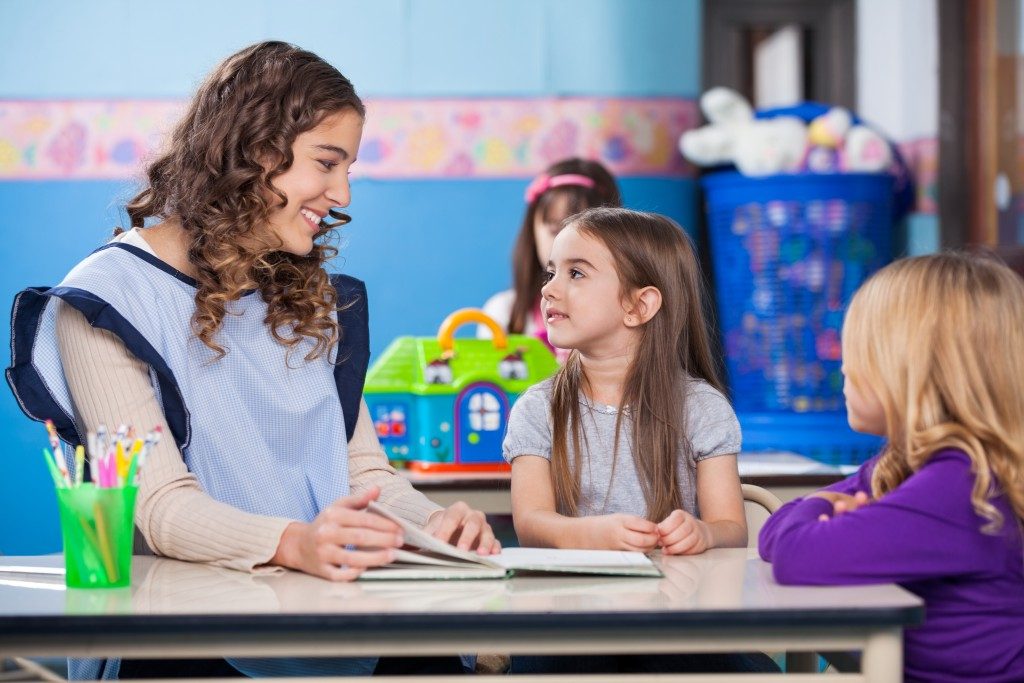Virtual reality is already taking over the world. You can see plenty of entertainment applications for it, with games and movies being a few examples of the unique environment it can provide to users. Virtual reality is boosting its marketability because of its advanced and futuristic features. However, it is only a matter of time before its application enters significant business sectors.
Education feels like virtual reality’s next stop. Students can benefit from an immersive learning environment, preventing the constraints of traditional classrooms. Since the pandemic tapped the potential of online classes, virtual reality’s application in education might only be a matter of time. Students aren’t the only people benefiting from the new technology.
Teachers themselves can utilize virtual reality to improve their services. They have access to a valuable tool that can assist their classes significantly. Virtual reality could be as revolutionary as online collaboration tools and audio-visual equipment. VR’s role in these elements makes it mouth-watering for instructors.
Entering Difficult to Describe Territory
Teachers chose the field because they are experts in it. They know all the necessary knowledge and skills to help students improve in those subjects or degrees, preparing them for a stable career in the future. Not everything is within their grasp at all times. There will be objects, items, and processes that will give them a challenging time to describe.
Take a dinosaur, for example. Those pre-historic creatures might be part of history classes teachers have to teach. Describing a dinosaur can be challenging, especially when students get the full picture. Assistance from textbooks and audio-visual equipment might be enough, but what if you can give them more? This situation is where virtual reality can be game-changing.
Students can take their VR glasses to enter an environment and observe a live dinosaur in its closest life-like appearance. They can study its movement, hunting habits, and behavior through virtual simulation. Students often rely on imagination when teachers have to describe those things. With VR for education, teachers can make students’ creative thoughts a reality.
Grabbing Student Attention
Teachers often find it challenging to control a room. Students practice their social skills inside the classroom. Their activities and behavior could cause them to feel distracted. As a result, teachers might not have students’ attention during essential parts of the discussion. They might even catch a few people sleeping at some point. Those will reflect badly on teacher reviews, affecting their respective careers. Virtual reality can become an assistive tool for that situation.

Virtual reality immerses students in a unique environment through their senses. With their sight and hearing focused on the simulations, teachers might not encounter problems with distractions. From an instructor’s point of view, students might feel distracted when they take off the VR glasses. If everyone has it on, teachers know that students are learning.
Endless Allowance for Mistakes
Part of becoming an instructor is ensuring that students master the skills and knowledge necessary for their lives. They don’t have the experience you do, leading to multiple practice exams and tests that immerse them in real-life scenarios. The situation means utilizing resources and equipment that might end in waste because of a student’s inexperience.
The best teaching experience is a failure, but it comes with costly attempts. Too many mistakes mean wasted resources that the academic institution might not tolerate. Virtual reality can step in and allow students to fail over and over, wasting little to no resources in the process.
Simulation can restart when students commit mistakes, and teachers should be present to tell them what they did wrong. They will improve after every attempt, allowing them to feel well-prepared when the real-life scenario arrives. Teachers should never define mistakes as failures but as lessons students can learn from every day.
Bypassing Safety Hazards
One of the most challenging tasks a teacher must perform is ensuring that students are safe. Experiments and training could expose them to dangerous tools and processes. Teachers will be the first professionals present when students encounter those things. Student inexperience makes young professionals vulnerable to danger. Virtual reality, however, eliminates the threat.
When students deal with safety hazards, they might end up losing a limb during their first attempt. Virtual reality helps teachers avoid those scenarios, creating a safer environment from which younger generations can learn. The confidence and experience they can gain from utilizing those safety hazards in VR can prepare them for the real thing.
Virtual reality’s application in education is promising, and academic institutions are preparing it for students. Teachers will also benefit from the valuable technology, especially when encountering these situations during their teaching journey.


